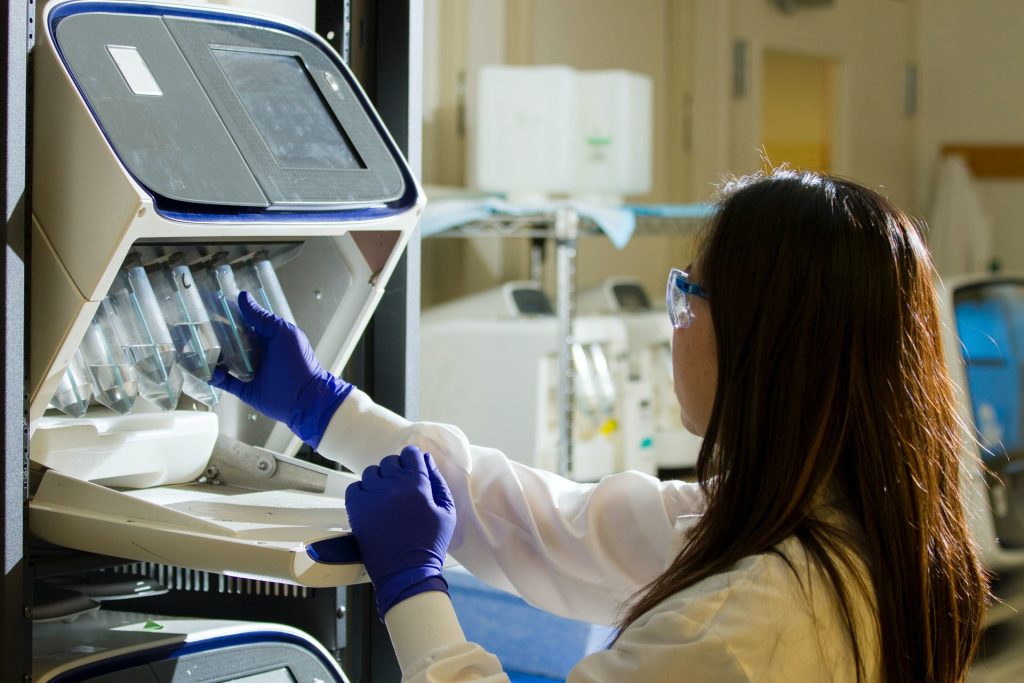Study Identifies Risk Factors in Heavy Drinkers for Advanced Liver Disease

A new study finds that heavy drinkers with either diabetes, high blood pressure or a high waist circumference are as much as twice as likely to develop advanced liver disease.
The answer may lie in three common underlying medical conditions, according to a new study published in Clinical Gastroenterology and Hepatology from Keck Medicine of USC. The research found that heavy drinkers with either diabetes, high blood pressure or a high waist circumference are as much as 2.4 times more likely to develop advanced liver disease.
“The results identify a very high-risk segment of the population prone to liver disease and suggest that preexisting health issues may have a large impact on how alcohol affects the liver,” said Brian P. Lee, MD, MAS, a hepatologist and liver transplant specialist with Keck Medicine and principal investigator of the study.
Diabetes, high blood pressure and a high waist circumference (89cm for women; 101cm for men), which is associated with obesity, belong to a cluster of five health conditions that influence an individual’s risk for heart attack and stroke known as cardiometabolic risk factors.
Cardiometabolic risk factors have been linked to the buildup of fat in the liver (also known as metabolic dysfunction-associated steatotic liver disease), which can lead to fibrosis, or scarring of the liver. These risk factors affect more than one in three Americans, and cardiometabolic health has been worsening among the population, especially among those under 35, according to Lee.
Alcohol also causes fat buildup in the liver, and alcohol consumption has been on the rise since the COVID-19 pandemic, said Lee. Due to the prevalence of both cardiometabolic risk factors and drinking in the United States, Lee and his fellow researchers undertook the study to investigate which cardiometabolic risk factors predisposed the liver to damage from alcohol.
They analysed data from the National Health and Nutrition Examination Survey, a large national survey of more than 40 000 participants, looking at the intersection of heavy drinking, individual cardiometabolic risk factors and the incidences of significant liver fibrosis. Significant liver fibrosis refers to liver scarring that can lead to liver failure.
For the study, heavy drinking was characterised as 1.5 drinks a day for women (20 grams) and two drinks a day for men (30 grams).
Researchers discovered that heavy drinkers with either diabetes or a high waist circumference were 2.4 times more likely to develop advanced liver disease and those with high blood pressure 1.8 times more likely. They found that the other two cardiometabolic risk factors – high triglycerides and low HDL (high-density lipoprotein) had less significant correlations to liver disease.
While the study did not analyse why these three cardiometabolic risk factors are more dangerous for the liver, Lee speculates that these conditions share a common pathway to fat buildup in the liver that when combined with extra fat deposits in the liver from excessive alcohol, can cause significant damage.
Lee stresses that the study does not imply it is safe for those without these three cardiometabolic risks to consume large amounts of alcohol. “We know that alcohol is toxic to the liver and all heavy drinkers are at risk for advanced liver disease,” he said.
Lee hopes that the study results will encourage people to consider their individual health and risk profile when making decisions about alcohol consumption. He would also like to see practitioners offer more personalized health screenings and interventions for those who drink with cardiometabolic risk factors so that liver damage among this high-risk group can be caught early and treated.







